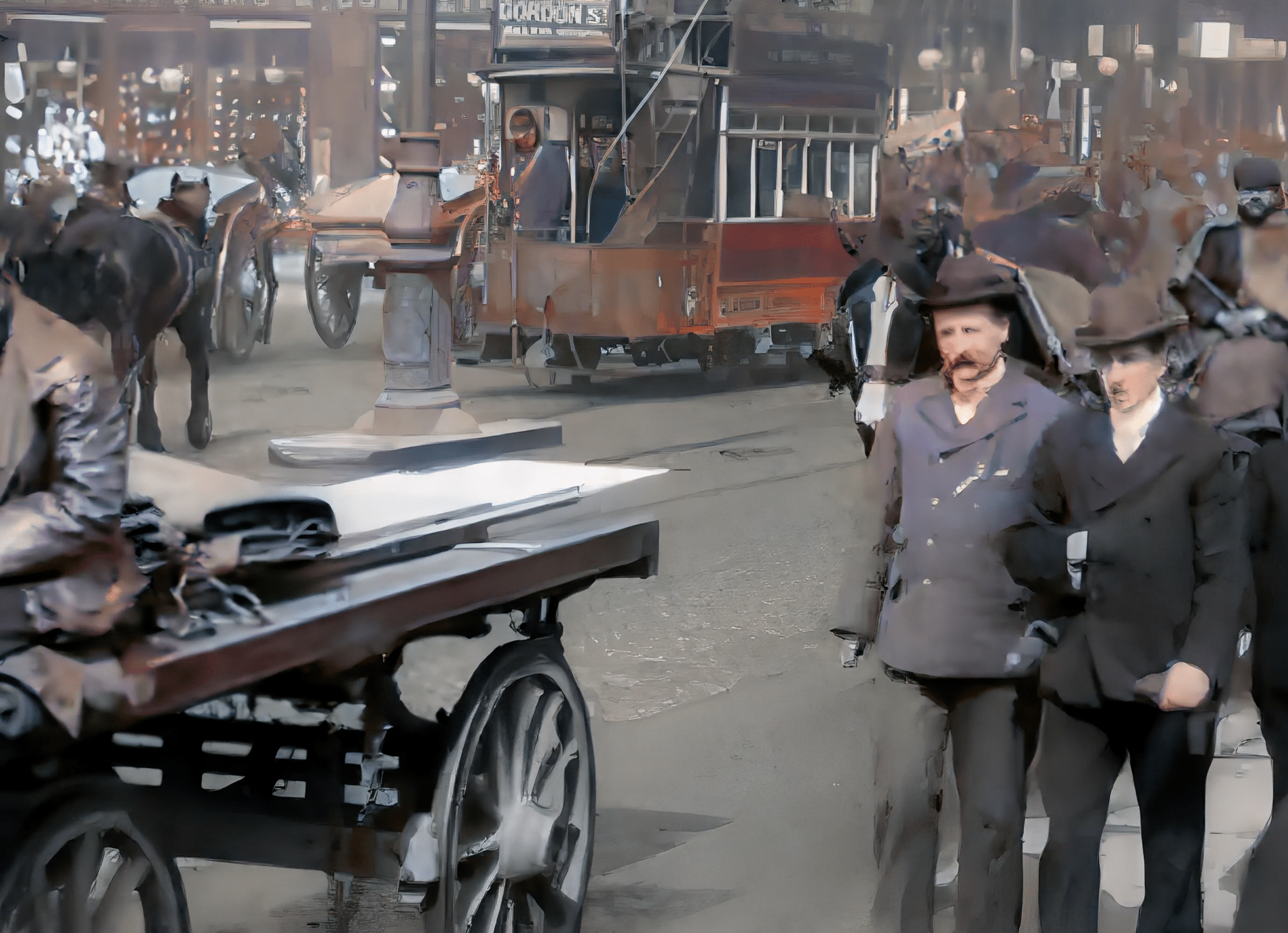Jamaica Street in Glasgow, Scotland, has a rich history and has undergone several transformations over the years.

In 1901, Jamaica Street was a bustling and vibrant thoroughfare, situated in the heart of the city’s commercial center. It was known for its diverse array of shops, businesses, and architectural landmarks.
During that time, Glasgow was a major industrial city, and Jamaica Street played a significant role in its economic and cultural development. The street was lined with various types of businesses, including retail stores, warehouses, offices, and entertainment venues. It was a hub of activity, with people bustling about, horse-drawn carriages traversing the road, and the constant sounds of commerce filling the air.
One of the notable architectural features of Jamaica Street in 1901 was the Mitchell Library. Although it is not directly situated on Jamaica Street, it is located nearby and has become an iconic landmark in Glasgow. The library was gifted to the city by Stephen Mitchell, a wealthy tobacco manufacturer, and it served as a valuable resource for the local community.
Jamaica Street also intersected with other important thoroughfares, such as Argyle Street and Midland Street, further enhancing its prominence and accessibility. It was well-connected to the city’s transportation network, with tram lines running along its length, facilitating the movement of people and goods.
As Glasgow continued to grow and evolve in the 20th century, the landscape of Jamaica Street changed. The rise of automobile transport led to the eventual decline of tram services, and the street underwent redevelopment and modernization efforts. Many of the historic buildings were either demolished or repurposed to accommodate the changing needs of the city.
Today, Jamaica Street is still a vibrant part of Glasgow, though it has adapted to the needs and demands of the 21st century. It features a mix of businesses, restaurants, bars, and creative spaces, contributing to the city’s thriving cultural scene. The Mitchell Library remains a prominent feature nearby, attracting visitors and scholars from all over.
While the specific details and businesses present on Jamaica Street in 1901 may have changed, the street’s legacy as a vital artery of Glasgow’s commercial and social life has endured, making it an integral part of the city’s history.
